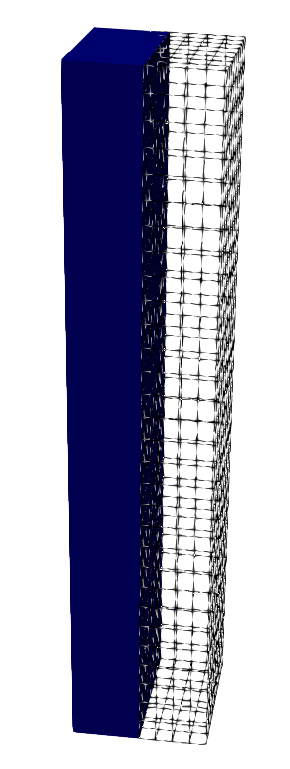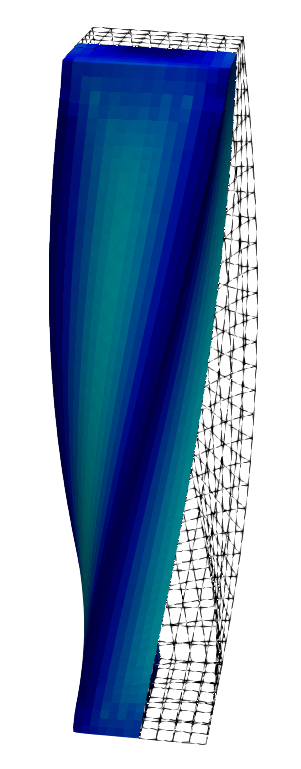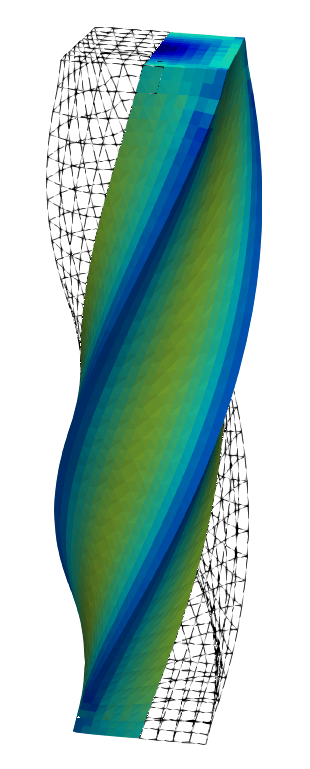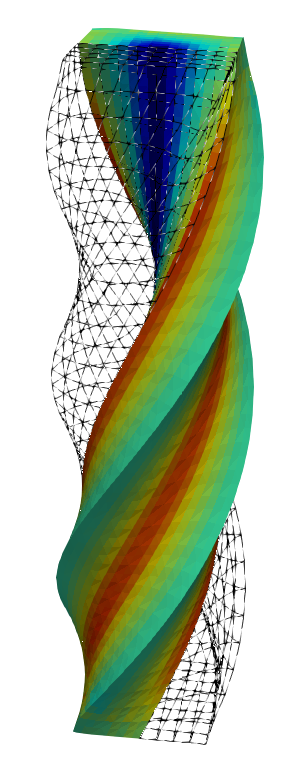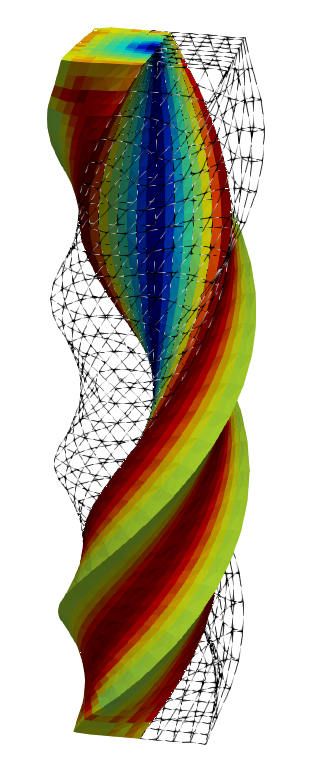Section: New Results
Hybrid high-order methods for nonlinear mechanics
Participants : Alexandre Ern, Nicolas Pignet.
|
Our team contributes actively to the development of hybrid high-order (HHO) methods for nonlinear solid mechanics. Within the PhD of Nicolas Pignet in collaboration with EDF we have addressed several nonlinearities, including plasticity, large deformations, contact, and (Tresca) friction [15], [14], [49]. The advantage with respect to conforming finite elements is the robustness with respect to volumetric locking. The advantage with respect to mixed approaches is computational efficiency avoiding saddle-point formulations and additional unknowns. The advantage with respect to discontinuous Galerkin methods is avoiding the integration of the nonlinear behavior law at face quadrature nodes and the use of symmetric tangent matrices within Newton's method. The torsion of a square-section elastoplastic bar is presented in Figure 1. The color filling reports the equivalent plastic strain. The solution is obtained with the HHO method using the polynomial degree for the face and the cell unknowns.


